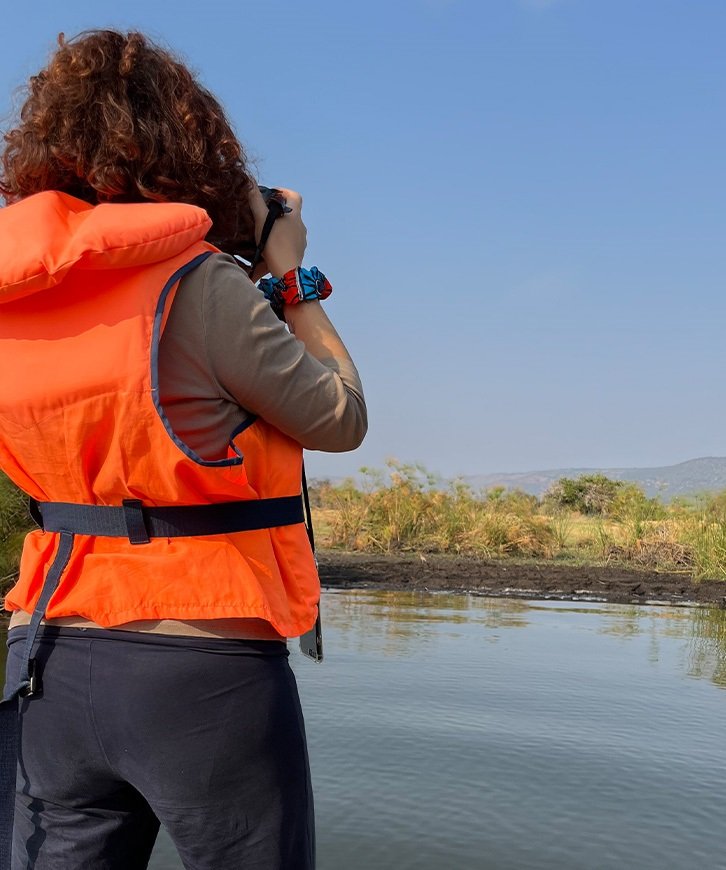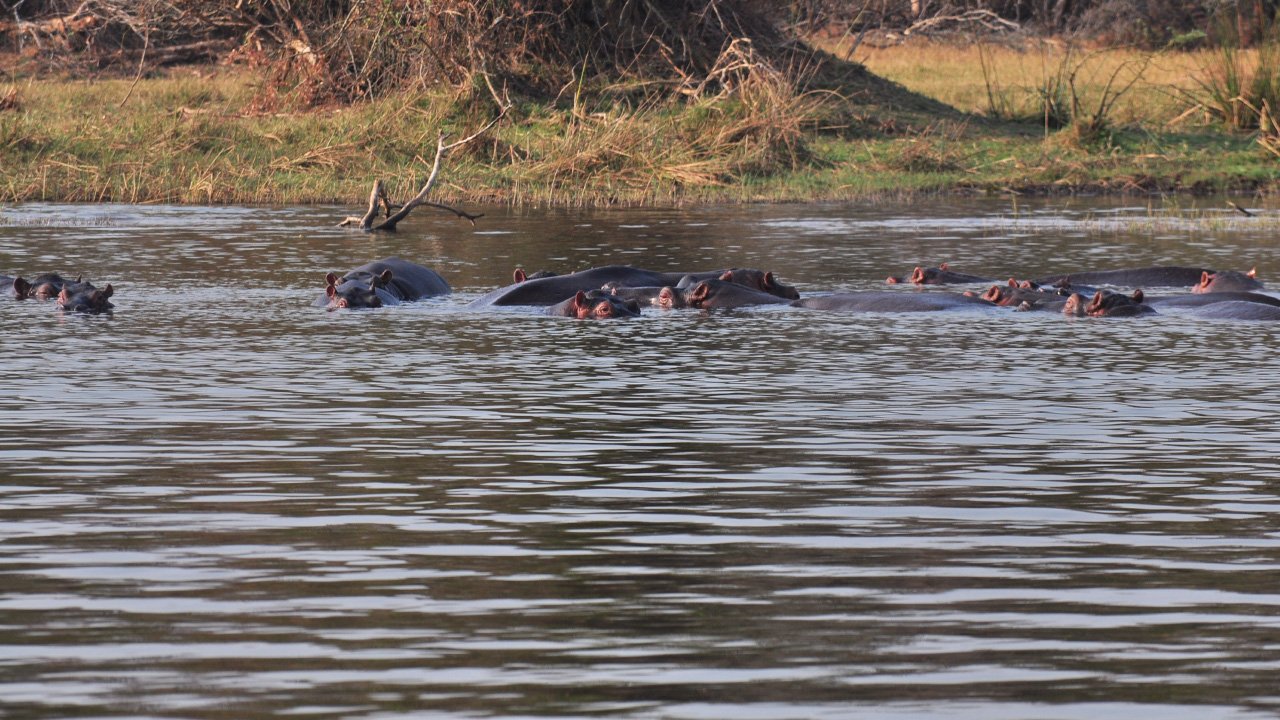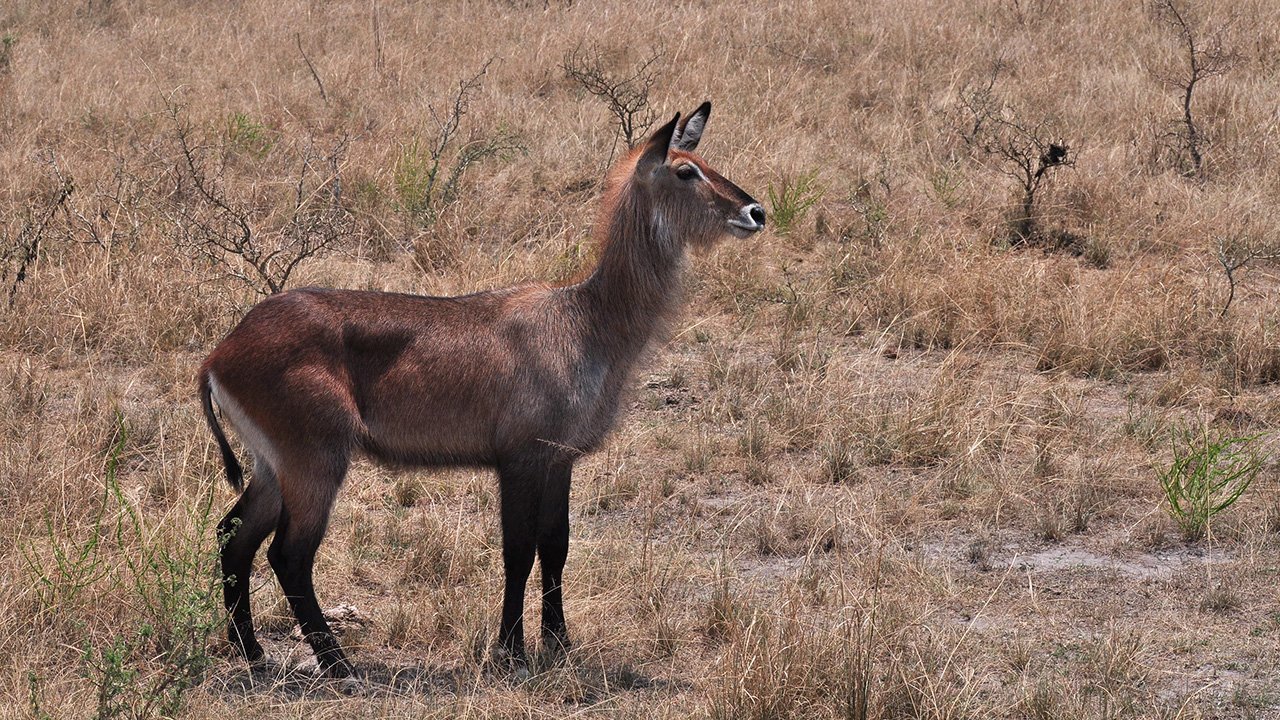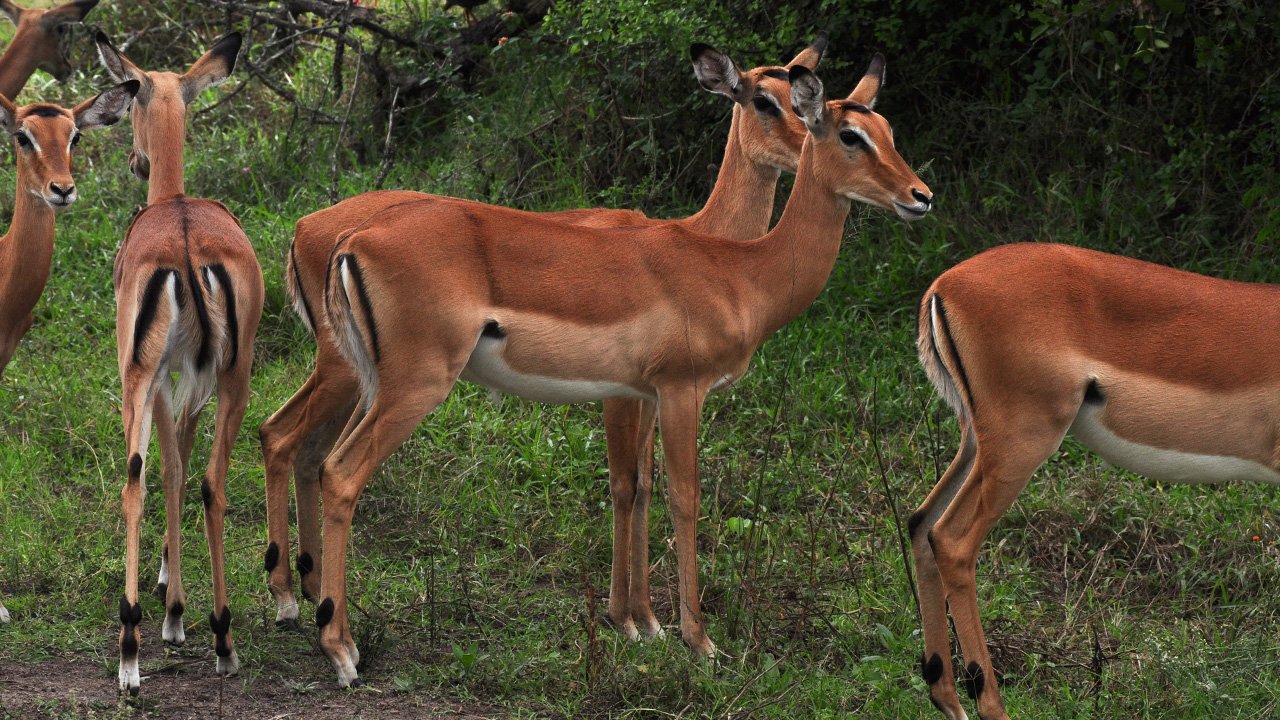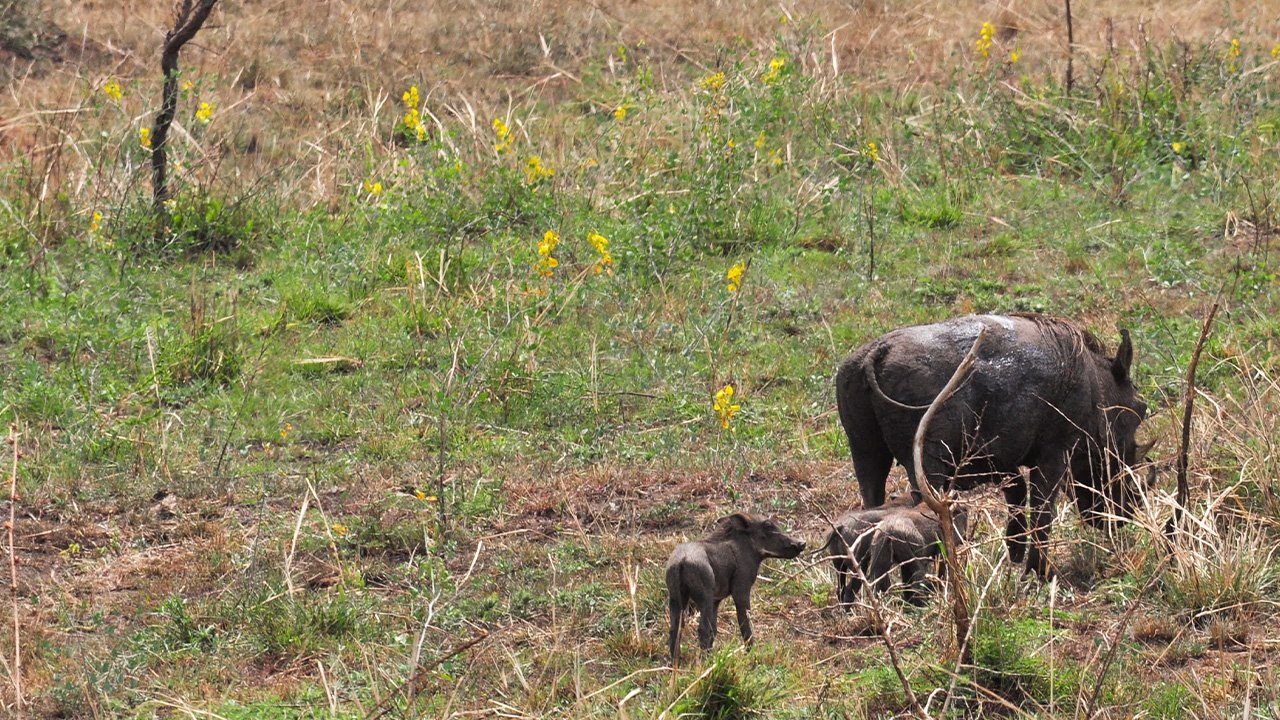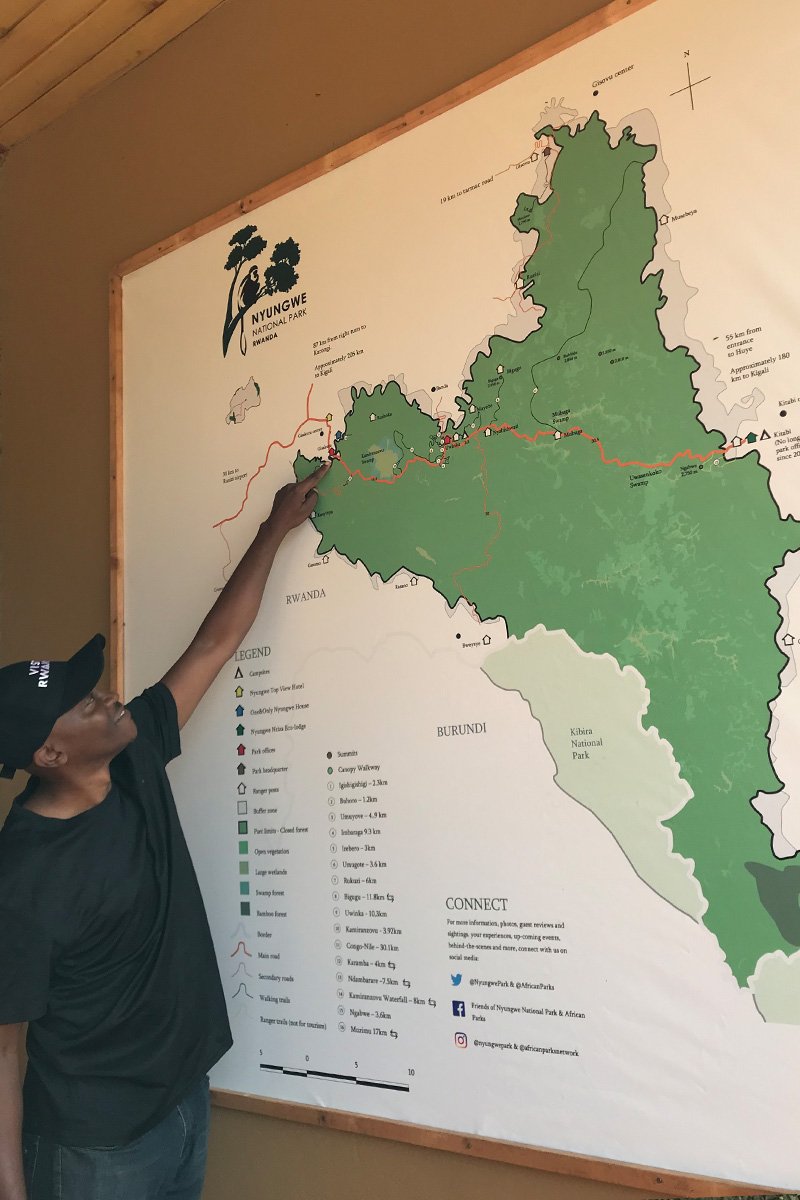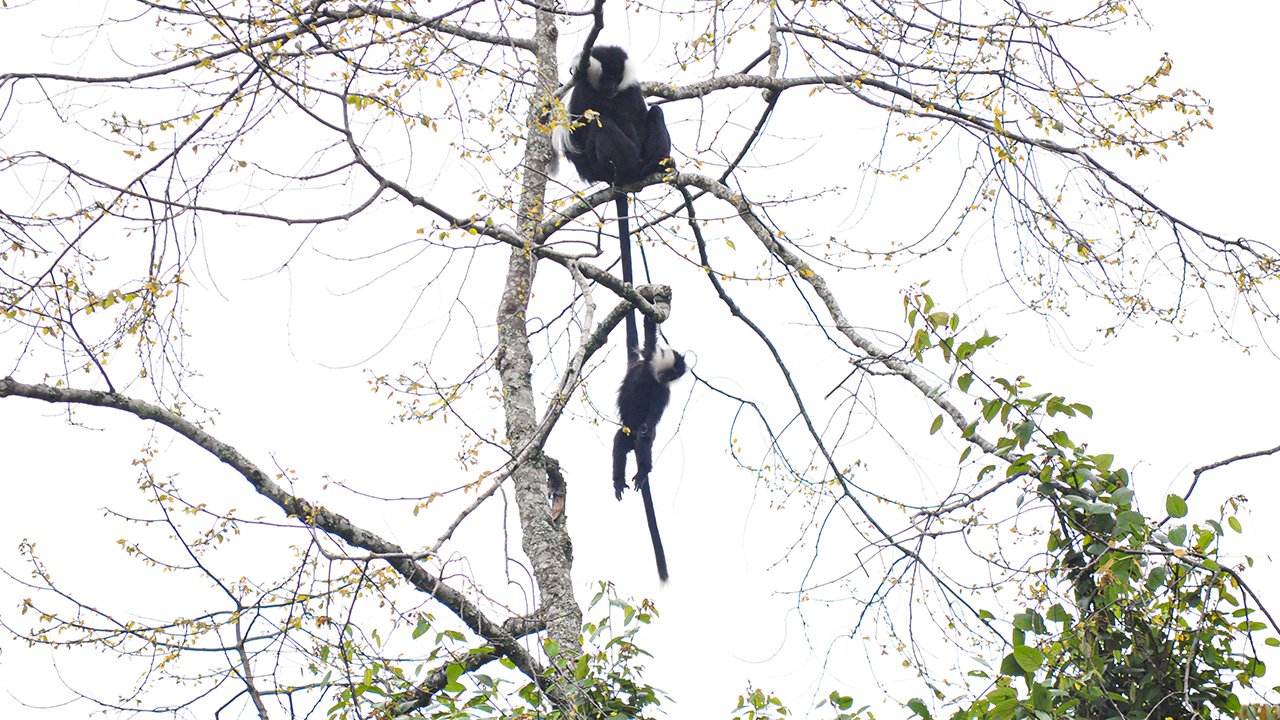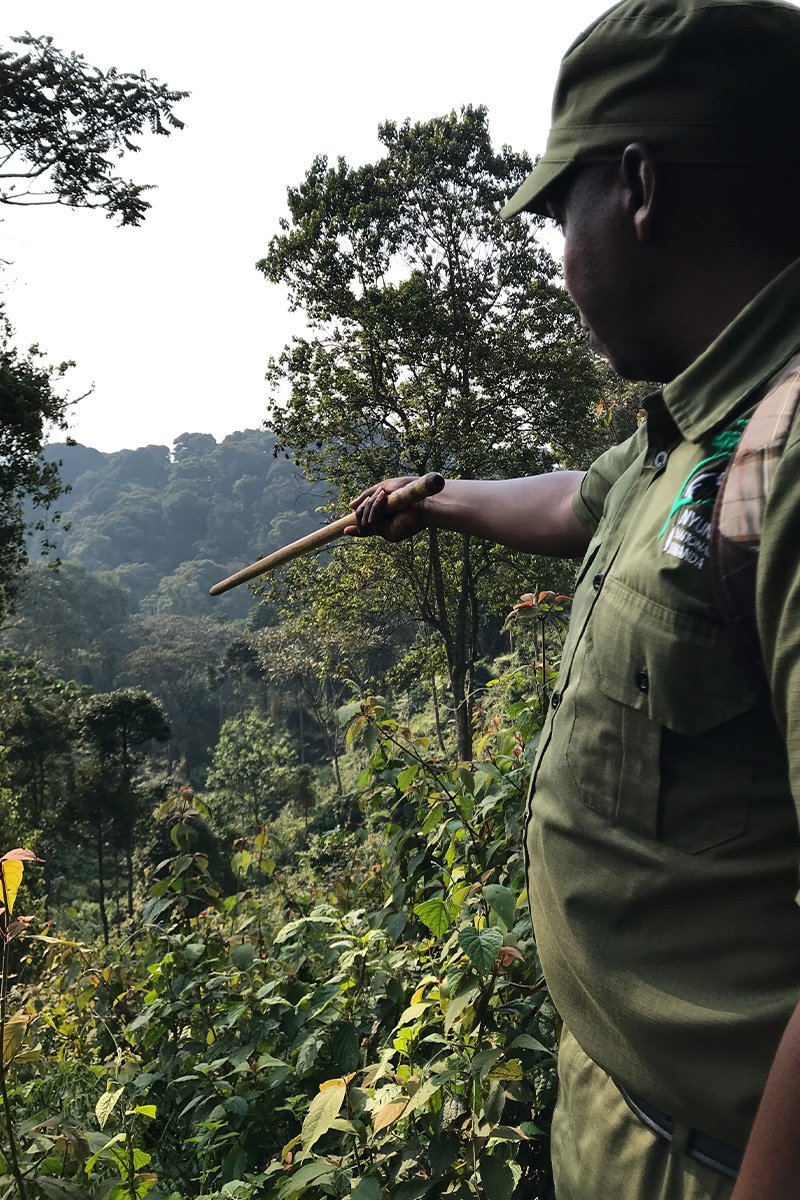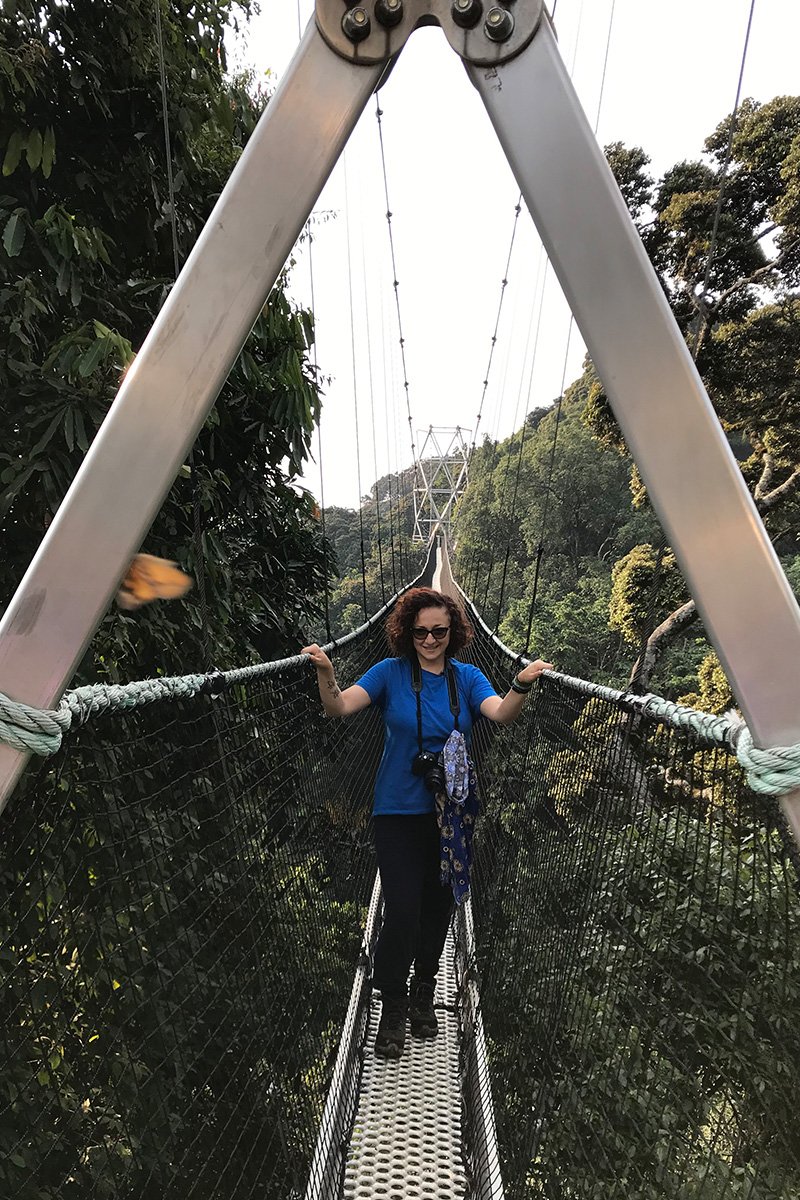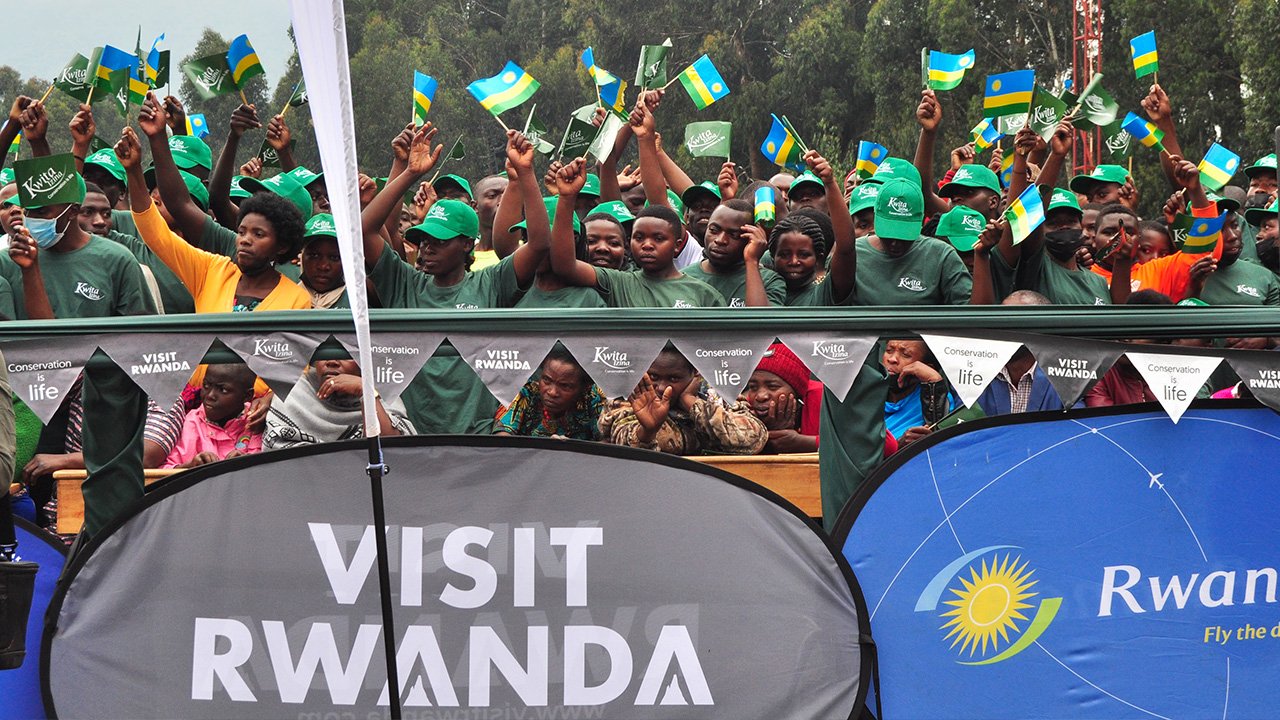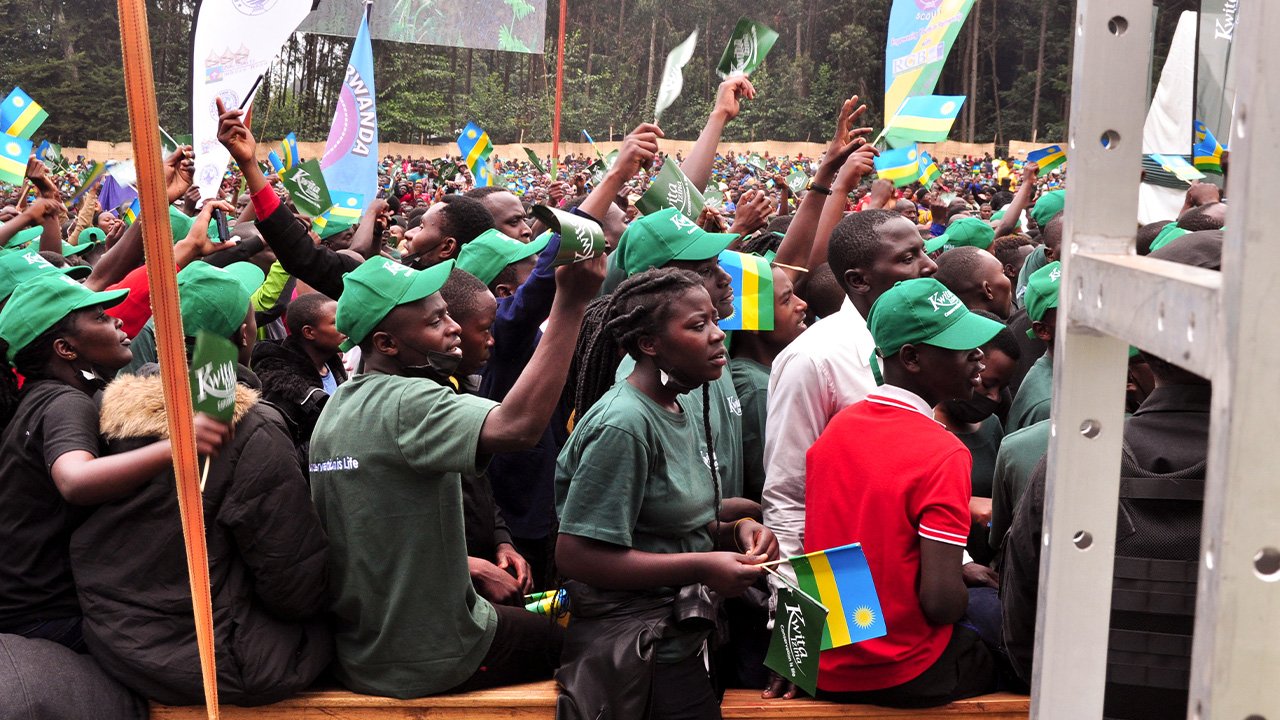Rwanda: A Special Country (Culture, History & Conservation Efforts) - Part 2
Exploring Wildlife and Empowering Communities through Tourism: Other National Parks, Amazing Places to Visit and Fabulous Conservation Projects
Important conservation efforts have been achieved everywhere in Rwanda, and Volcanoes National Park (NP) – which is probably the most internationally well known, thanks to its beloved and precious gorillas – is only the tip of the iceberg of what the country is accomplishing in protecting biodiversity and wildlife.
Let me take you around the country to visit all the other national parks, so you can see for yourself that there are plenty of reasons to visit and to support this mission.
Akagera National Park
Founded in 1934 strictly for research purposes, and open to tourism only at the beginning of the 1970s, Akagera NP is currently the largest protected wetland in central Africa and the only savanna region in the country. On the edge of being lost forever after the genocide of 1994, the park today is thriving under African Parks that from 2010, in partnership with the Rwanda Development Board (RDB), is responsible for the management of the area.
After having successfully eliminated poaching in only five years, 45 lions were introduced from South Africa in 2015. This was followed by the introduction of black rhinos in 2017, while in 2021, 30 white rhinos joined them. Official statistics show that now, wildlife numbers have grown from less than 5,000 in 2010 to almost 12,000.
With these impressive numbers, I feel proud that Akagera was the place that hosted my first African safari. And although I didn’t have the chance to see any lions or rhinos, to my great excitement in the early hours of my first day, on the bank of lake Ihema in the southern part of the park at an altitude of 1,292 metres, I spotted my very first wild elephant.
During the game drive we encountered much wildlife: waterbuck standing as though they were posing for our clicks; many groups of quiet, light-brown impalas; zebras crossing the path of our jeep, almost unaware of our presence and; an entire family of warthogs with their littles ones moving quickly behind to catch up their parents. Moving slightly, on the surface of the water, we saw many pairs of ears belonging to some of the 885 hippos recorded as living in the park by the last census. Because of those numbers, Akagera continues to confirm its reputation as their ‘haven’.
Before leaving the park from the northern gate, after a few hours’ drive, we spotted in the distance a large black spot on the horizon, unrecognisable at first. As we got closer, the other options were dissipating and we soon realised that we were looking at a herd of buffalos, resting on the fresh grass, accompanied by their white companion birds on their back and with many giraffes in the background! Quite an impressive view.
Community Benefits
As we were informed the day before the game drive – by Jean Paul Karinganire, Assistant Tourism & Marketing Manager at the NP – the current goals of the park are to educate 2,000 kids every year and to promote the engagement of the local communities, that reside around its boundaries, in the development of local projects financed directly by tourism –nowadays this amounts to 300,000 individuals. I was indeed pleased to hear that the projects are democratically chosen directly by the communities, according to their needs and priorities, following a long, horizontal decision-making process that happens at the grassroots level every year.
Another important goal of the park, I was told by Jean Paul, is to create new economies and income-generating enterprises, such as beekeeping and fishery.
Thanks to projects like the Gishanda Fish Farm, the country is progressing in the innovation of its aquaculture development, while the surrounding communities are benefitting through new employment opportunities and access to new skills and knowledge. Last but not least, thanks to the increased access to a high-quality source of protein provided at a discounted price, the project will also help to combat local nutritional deficits.
In Akagera, you can also visit a traditional cultural village, a Community-Based Tourism project managed by Twema Tourism Business Group. Located in Nyankora, this is the last small village you cross before arriving at the southern entrance to the park.
Thanks to projects like Twema’s, tourism becomes a tool for sustainable development by providing alternative employment opportunities to the people of the region, that not only won’t impact the biodiversity, but will also contribute to the cultural conservation and education of responsible tourists.
Cultural performance at Red Rocks, Musanze.
Nyungwe National Park
In the south-western corner of the country, in Africa’s largest protected mountain rainforest lies Nyungwe NP, an area rich in biodiversity and endemic species and the home of 1,068 plant species, 322 bird species, 75 different species of mammals and 13 different types of primate.
It contains different ecosystems, from rainforest to bamboo, grassland, swamps and bog habitats. After the impressive results accomplished in Akagera, in 2020 African Park was invited by the government to start a 20-year mandate to also manage this park. The first actions taken are encouraging and, in fact, in 2021 1,277 hectares of indigenous forest regeneration were assisted through the removal of exotic plants.
I spent hours in this forest, which I deeply loved. I sensed an intense and old energy passing through to me from the huge, ancient plants. I stood in silence next to monumental trees, after looking at flowers and lianas hanging over my head, or enjoying the shapes and bright, moist colours of the mushrooms sprouting from the fallen branches on the path.
I visited the forest three times in three days: the first day was to attempt the 200 m long canopy walk at 70 m above the forest floor; the second day, with the help of our expert ranger and the support of my porter, I went back to follow a couple of not too timid chimpanzees among the trees; and finally, the third time I went back I felt surprised and breathless in front to the Ndambarare Waterfall.
On one on those days, while sipping a restoring cup of local coffee at Gisakura Visitor Centre after the forest hike, I had the chance to witness the early steps of a young black and white colobus learning to jump tree branches, under the concerned but vigilant eyes of his parents.
According to African Parks’ official information page, in Nyungwe NP over 6,000 community members and local leaders have been reached and engaged in community environmental awareness meetings. And in 2021 alone, 1,000 children visited the park.
On top of that, according to African Parks, 15 local guides have been trained to deliver the park’s tourism activities, thanks to a community freelance guiding project.
Gorillas of the Volcano National Park
An important aspect of conservation in Rwanda is the protection of the wildlife, in particular of the mountain gorillas, whose world population and efforts for protection, the country shares with neighbouring Uganda and Congo.
Although the mountain gorilla is still considered an endangered species, according to the Dian Fossey Gorilla Fund International (DFGFI), the overall world population in the Virunga mountains rose from 480 individuals in 2010 to 604 in 2016, and has currently reached 1,063 individuals.
Tourism has always played a key role in conservation efforts and following the successful examples of other pioneers of this model, such as Botswana, tourism in Rwanda has invested in a low-volume and high-yield approach, focusing primarily on high-end visitors.
This approach was intensified in 2017 by the decision to double the cost of permits to visit the gorillas from $750 to $1,500. This bold decision seems to have paid off and tourism is, overall, a growing sector. In fact, according to RDB official sources, Rwanda’s tourism revenues increased by 25% from $131 million in 2020 to $164 million in 2021, despite the COVID-19 pandemic.
Celebrating Wildlife
The Kwita Izina, the baby gorilla naming ceremony, is the annual celebration of all those efforts and the grandiosity of it proves the importance that conservation has in the country, as well as the trust and recognition that Rwanda has gained on an international level.
As every year, on 2nd September, many public figures and world celebrities – footballers, philanthropists, singers, sports champions, social entrepreneurs – were invited to name the 20 baby mountain gorillas born in the Volcanoes NP over the last year.
The then Prince Charles, now King Charles, was one of the well-known figures who was invited to choose a name for one of the recently born gorillas. The name he chose, Ubwuzuzanye – which is the Kinyarwanda for ‘Harmony’ – he wanted to serve as a reminder of the fact that ‘restoring harmony and balance between nature, people and the planet is the most critical issue facing humanity’.
Thanks to an invitation from the RDB, I had the chance to join an international delegation of journalists and travel writers to follow this uplifting event from the first row. I was very close to the more than 50,000 participants and I absorbed all their enthusiasm while singing along with the slogan ‘conservation is life’, jumping up and passionately waving their event flags.
Volcanoes NP is the only Rwandan park where the Gorillas live and, due to a series of specific conditions, here the human–wildlife conflict is felt with more intensity. In any case, regardless of the differences, the country has developed a system that seems to represent the key to the successful management of issues that relate to the conservation and human interaction.
A Successful Model for Protecting Wildlife
In 2019 alone, Rwanda received 1.63 million visitors, while the National Parks counted more than 100,000 visitors and collected $28.9 million from park entries.
After having developed policy guidelines, the RDB has implemented Tourism Revenue Sharing (TRS), a programme that we believe represents one of the keys to the resolution of the human–wildlife conflict.
Thanks to the TRS scheme, 10% of all tourism revenue is now invested in the communities that live around the country’s national parks. In 2017, the revenue sharing was increased from 5% to 10% of gross tourism revenues earned by the RDB.
Since 2005, when the scheme was introduced, the RDB has invested RWF 5.34 billion (equal to $5 million) into the communities around the national parks.
This has translated into the implementation of 698 community projects that RDB, counting on the support of the local governments, has developed and delivered to, and with, the local communities.
The projects have built schools, clinics, family houses and water systems and supported the improvement of agricultural production.
The vision of the TRS is to guarantee the sustainable conservation of the natural environment but not at the detriment of the neighbouring communities.
Among the TRS’ objectives is compensation for loss of access and/or crop damage due to wildlife activity. It also provides alternatives to the overuse of park resources, such as wood, and options for income-generating businesses, including encouraging Community-Based Tourism (CBT) enterprises.
Local communities seem to play an active role in the process.
They are not only compensated if they suffer any damage caused by wildlife, but they have also been given the tools to build a healthy relationship with the park itself. Education plays a crucial role obviously, especially with the younger generation, but so do the tangible opportunities to invest in sustainable economic alternatives and to demonstrate other respectful uses of the park, that are beneficial to all parties.
During this short but immersive experience, we have noticed that while community responsibility grows in Rwanda, community members are increasing their sense of ownership of the land and their resources.
If this is true, then conservation here is happening through a system that consciously empowers its community members as part of the process.
Thanks Rwanda, for the inspiration!
Murakose Chane!
(This blog has been written by Elisa Spampinato, a travel writer & Community Storyteller, CEO & Founder at Traveller Storyteller. She travelled to Uganda in September 2022. Photo Credits by Elisa Spampinato)

